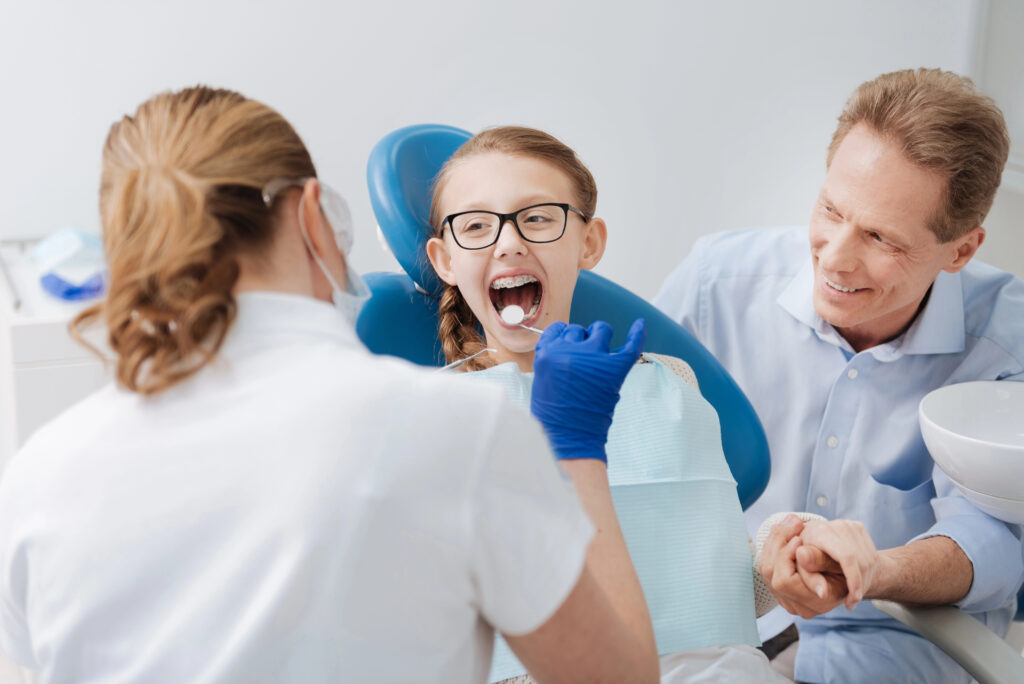
Orthodontic treatment is designed to correct misaligned teeth and improve oral health. For many children and teens with alignment issues, it can be challenging or uncomfortable, but it is worth the effort.
But if you are a parent of a child with special needs, you are likely not just concerned with achieving a beautiful, healthy smile; you also want to do all you can to make the treatment process manageable and aligned with your child’s physical, sensory, and emotional needs.
Let’s take a closer look at the most popular orthodontic options for children with special needs kids in mind.
Understanding Your Orthodontic Options
The best choice for your child will depend on several factors, including their level of comfort with healthcare visits, their ability to manage treatment responsibilities (like keeping up with oral hygiene or clear aligner wear), and how their specific needs may affect orthodontic care.
Traditional Braces
Braces are the most common and widely recognized orthodontic treatment. These consist of brackets attached to the teeth, connected by wires, and often supported by bands. Orthodontists adjust the braces periodically to gently shift teeth into the desired position.
Why Braces May Be a Good Option:
Because braces are fixed directly to the teeth, they can be an excellent option for many patients for several reasons. They can be especially beneficial if your child struggles with taking on independent responsibilities.
- Cannot be forgotten or misplaced
- No need to remember to wear for a minimum amount of time
- No need to replace every 2 weeks like aligners
- No need to remember to remove or replace them
- Good option if your child has issues with fine motor skills required to place and remove aligners
- Braces can address a wide range of orthodontic issues, including more severe cases
Potential Challenges
While braces are a great option for many, there are also some challenges that you will want to consider.
Sensory Issues
Some children may find the sensation of brackets and wires uncomfortable or even overwhelming. Adjustments at the orthodontist’s office might also cause mild discomfort.
Oral Hygiene Requirements
Braces require careful cleaning to prevent plaque buildup and cavities. Children who struggle with fine motor skills or sensory sensitivities around their mouth may find brushing and flossing around braces challenging.
More Orthodontic Visits
Because braces must be adjusted periodically and because brackets and wires can break, they typically require more in-office visits than aligners.
Clear Aligners
Clear aligners use a series of transparent removable trays that gradually shift teeth into the correct position. They are an excellent alternative to traditional braces for those who want a nearly invisible treatment option.
Why Clear Aligners May Be a Good Choice
Aligners are made of a smooth plastic material. They tend to be more comfortable than braces and less likely to irritate the soft tissues in the mouth. They’re also nearly invisible, which may appeal to kids who feel self-conscious about braces.
Additionally, aligners are removable, making it easier for a picky eater to eat their favorite foods without the restrictions that come with braces. Brushing and flossing are also more straightforward compared to cleaning around braces.
Kids using aligners generally need fewer in-office adjustments, reducing the number of appointments and easing the burden on families with busy schedules or aversions to dental visits.
Potential Challenges
Despite all of the benefits this popular treatment has, there are some things you may want to take into consideration as potential issues.
Compliance Requirements
Aligners must be worn for 20–22 hours a day to be effective. They also must be swapped out for the next pair in the series approximately every 2 weeks. This can pose a challenge if your child has difficulty maintaining routines or remembering to wear their aligners consistently.
Risk of Loss or Damage
Because the trays are removable, there’s a higher chance they could be misplaced or damaged. For children who may not fully grasp the importance (and expense) of their aligners, this can be a significant concern.
Not as Effective for Severe Cases
While aligners are effective for many orthodontic issues, they may not work well for more complex cases that require significant tooth movement or jaw alignment.
Deciding Which Option Is Best for Your Child
Determining which orthodontic option is best requires understanding both your child’s unique needs and the requirements of their individual case. Here are some key factors to consider:
- Severity of misalignment
- Sensory sensitivities
- Ability to follow a routine
- Oral hygiene considerations
- Tolerance of office visits
- Your child’s preference
Orthodontic treatment can be a big step for any child, but with the right knowledge and support, it’s entirely manageable.
If you have questions about which option is right for your child, our team is here to help. Schedule a consultation today, and let’s create a custom orthodontic plan that works for your family.





